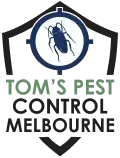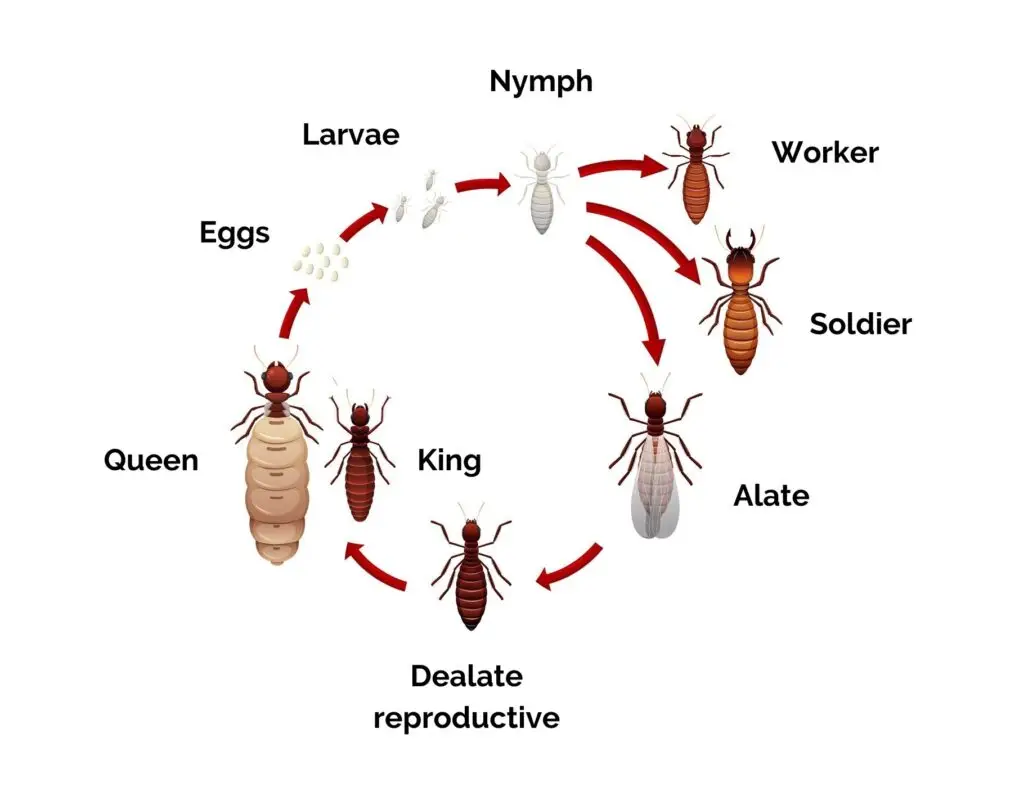Termite infestations are often underestimated, but the truth is that these pests can damage your property without you ever knowing they’re there. In Australia alone, termites cause more than $1.5 billion in damage to homes annually. Most people never actually see termites; instead, they only discover signs of their destructive presence through mud tubes, cracked paints and tiny pinholes on walls.
Removing termites from your property when you first see the signs of infestation is essential to save your home from expensive damages. By recognising the different stages of the termite lifecycle, homeowners can implement targeted pest control strategies to manage the infestation well.
Colony Organisation of Termites
Knowing how the colonies are structured can help you understand the challenges they pose in terms of termite treatment.
At the heart of a termite colony is its caste system, which consists of three main groups: workers, soldiers, and reproductives. Each caste has specific roles and responsibilities that help the colony function smoothly.
- Workers: This is the largest group in the colony. Worker termites are responsible for various essential tasks, including foraging for food, caring for the young, building and repairing the nest, and maintaining the overall health of the colony.
- Soldiers: These termites are equipped with solid mandibles and larger bodies. Their primary role is to protect the colony from predators, such as ants and other insects. While they don’t forage for food like workers, they play a critical role in defending the nest and ensuring the colony’s safety.
- Reproductives: This group includes the king and queen termites, whose core job is to reproduce. The queen can lay thousands of eggs daily, ensuring the colony grows. Once conditions are right, some reproductives will leave the colony to establish new colonies of their own during a process called swarming.
- The Queen and King: The queen is the heart of the colony. She is often much larger than the other termites and is dedicated solely to reproduction. The king supports her by mating and helping lead the colony. Together, they are responsible for producing the next generation of termites.
- Communication and Cooperation: Termites pose a significant threat to property owners due to their sophisticated communication system, primarily using pheromones. These chemical signals enable termites to efficiently coordinate activities such as sourcing food, identifying threats, and maintaining colony organisation. This seamless coordination allows the colony to work collectively and effectively, often leading to extensive structural damage to properties. Their ability to work in harmony means that termites can cause significant destruction before they are even detected, making them particularly hazardous to homeowners who may not realise the extent of the damage until it’s too late.
- Colony Development: Termites are particularly dangerous for property owners because their colonies can grow and expand dramatically, depending on the species. As a colony matures, it can split, sending out new reproductive termites to establish additional colonies. This capability to proliferate enables termites to infest various environments, escalating the risk of widespread structural damage. Their ability to create multiple colonies means that infestations can spread quickly and quietly, often going unnoticed by property owners until substantial harm has been done. This relentless expansion makes termites a significant threat to the integrity of homes and buildings.
- Rapid Breeding Cycle: Termites possess an alarmingly rapid breeding cycle, which poses a serious risk to property owners. A single colony can house thousands to millions of termites, and under optimal conditions, these colonies expand swiftly. Termites reproduce quickly, with the queen laying thousands of eggs annually. As new reproductive termites mature, they leave the nest to establish additional colonies, exponentially increasing the infestation potential. This rapid expansion can lead to widespread structural damage, as termites consume wood and other cellulose materials vital to a building’s integrity. The stealthy nature of their growth often means infestations go undetected until substantial damage has occurred, making early detection and control challenging for property owners and emphasising the importance of proactive pest management.
Termite Identification
Australia has several species, including subterranean, drywood, and dampwood termites, each with unique behaviours and nesting habits. Subterranean termites are notorious for their underground colonies, which can extend over large areas. They require moisture to thrive and build intricate mud tunnels to access above-ground wood, making them highly adept at causing extensive structural damage, often undetected until it’s too late.
Drywood termites, on the other hand, do not need as much moisture and can infest dry wood directly. They establish their colonies within the wood they consume, often inside furniture or structural timbers, making them a silent menace as they slowly hollow out wooden structures from the inside.
Dampwood termites prefer moist environments and are typically found in decaying wood or areas with high humidity. While less likely to invade well-maintained structures, they can still cause significant damage in areas with poor drainage or water leaks.
Understanding these nesting habits and behaviours is crucial for effective termite management and prevention. Each species’ ability to adapt to different environmental conditions and their specific nesting preferences highlights the importance of tailored pest control strategies to protect properties from these destructive pests.
To identify the type of termite, it is essential to look for signs of infestation, such as mud tubes, damaged wood, or discarded wings. Subterranean termites, for example, often build mud tubes that travel from the soil to their food source. In contrast, drywood termites may leave small pellets of dry faecal matter as evidence of their presence.
Annual termite treatment is crucial for ongoing protection and effective management of these pests. If unsure, consulting a pest control professional can provide definitive identification and help tailor your treatment approach.
Termite Control Methods
There are various methods for controlling termite infestations, and the treatment choice depends on the species and severity of the infestation. Here are some common methods used by Tom’s Pest Control Melbourne to remove termites from your property:
- Baiting Systems: Bait stations can be strategically placed around the property to attract and eliminate termites. This method works well for most termites, as they feed on the bait and carry it back to their colony, ultimately destroying it. It is particularly effective when targeting foraging workers and their nymphs.
- Liquid Insecticides: Applying liquid insecticides around the perimeter of a home can create a chemical barrier that prevents termites from entering. This method is often used for subterranean termite control and can be effective when performed correctly, mainly if applied during the nymph or adult stages.
- Fumigation: This may be necessary for severe infestations. The process involves sealing the structure and introducing a gas that penetrates all wood, effectively eliminating the pests. Fumigation is a treatment that often requires professional assistance and is most effective when targeting a larger population of adult termites.
- Physical Barriers: Installing physical barriers, such as stainless-steel mesh or sand barriers, can help prevent termites from accessing your home. This is particularly effective in new constructions and can provide long-term protection against infestations.
Get Effective Termite Treatment Done from Tom’s Pest Control
As a pest control expert, we offer termite treatments that effectively target termites at different lifecycle stages. Our team understands that each stage requires a tailored approach to ensure eradication. We use tried and tested termite control methods to address infestations completely.
With our annual termite treatment plans, you can protect your home year-round. Contact us today to schedule an inspection. We will check your entire home to find signs of termite activity and implement the right strategies to remove them before they cause significant damage.


